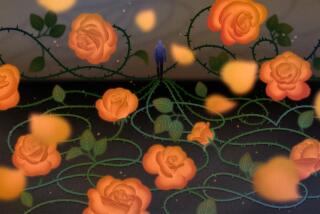Understanding the Tracks of Our Tears
To cry, in the sense of shedding tears of emotion, is not only human, but also, as Thomas Lutz tells us in his book on the subject, exclusively human. (People who have seen their pets cry will kindly make their arguments to the bookâs author, not its reviewer!) Yet, for a phenomenon so common, crying has received relatively little in the way of formal investigation, much less than laughter. In his amply researched and highly readable book on the subject, Lutz summarizes a wide range of material from the fields of anthropology, sociology, psychology, physiology, history and literature to help explicate the phenomenon so memorably described in Tennysonâs sonorous lines:
Tears, idle tears, I know not what
they mean,
Tears from the depth of some
divine despair
Rise in the heart, and gather to the
eyes,
In looking on the happy Autumn-
fields,
And thinking of the days that are
no more.
Tennyson goes on to identify tears with loss that cannot be repaired: the loss of love, the death of friends, the irreversible flow of time. His phrase âidle tearsâ echoes the lacrimae inanes of the North African queen Dido in Virgilâs âAeneid,â whose weeping failed to prevent her lover, Aeneas, from abandoning her. Tears, as Tennyson shows, may be deeply felt, infinitely sad and strangely sweet, yet still âidleâ in their lack of efficacy. Lutzâs book draws a similar conclusion, but not before examining many intriguing facets of the subject.
*
One important aspect is the physical. As Lutz explains, there are three kinds of tears: basal, which are the liquid coating that normally lubricates the cornea; reflex, the ones we get when our eyes are irritated by onion fumes or foreign objects; and psychic, the ones that come with strong emotion. Not only do these tears differ in origin, but they are also chemically different, the psychic tears containing more of certain hormones, proteins and other substances. This has prompted some researchers to theorize that having a good cry may indeed be a healthy thing, helping us get rid of excess substances that have built up under the stress of emotion.
This leads Lutz to consider the nature of the relationship between physical and emotional states; between emotional states and the rational ability to see the world as it is. Do our feelings generate chemical changes in our bodies or do the hormones produce the feelings? Different researchers have come up with different answers, leaving Lutz to conclude that this is really a question of which comes first, the chicken or the egg?
One valuable point that does emerge is that it is a mistake to think of reason and emotion as opposed to each other: Neurological research has shown that âlosing oneâs emotional abilities is itself detrimental to the ability to reason . . . [for] reason needs emotion to function properly.â Lutz is careful, however, to draw a distinction between the results of solid research and less soundly based nostrums of pop psychology. (Far be it from him to endorse the likes of primal scream therapy.)
*
Not surprisingly, anthropologists, Lutz tells us, have found that different cultures have different attitudes and practices regarding crying. In many cultures, tears of lamentation and the whole business of mourning the dead are primarily the role of women, men being expected to shed manly tears on contemplating heroism, honor, sacrifice and patriotic duty. From the earliest epics to our own day, weeping heroes have abounded. Tears have also added luster to the yearning eyes of lovers, courtly and otherwise. And, Lutz reminds us, there is a whole ecclesiastical literature devoted to the âtears of graceâ shed by suffering saints, repentant sinners and enraptured mystics.
Lutz takes note of how much attitudes have changed in recent times, especially in the wake of feminism. (I disagree, however, with his conclusion that there is something contradictory about urging men to cry more, get angry less, and women to do the opposite: These directives are not contradictory, but are aimed at helping each gender become more balanced.) Indeed, by the end of this fascinating and thoughtful book, one senses that the author has become a bit tired of his subject.
In place of the careful distinctions to be found in earlier sections, some of the later sections contain offhand assertions that are utterly unsubstantiated. At this point, Lutz, who earlier seemed so appreciative of the pleasures, charms and complex significance of tears, seems to have run out of sympathy with weepers, and his book, as a result, ends with more of a whimper than a bang. But for the most part, he has succeeded admirably in synthesizing a wealth of material and presenting it in a style that is lucid, discerning and engaging.
More to Read
Sign up for our Book Club newsletter
Get the latest news, events and more from the Los Angeles Times Book Club, and help us get L.A. reading and talking.
You may occasionally receive promotional content from the Los Angeles Times.







